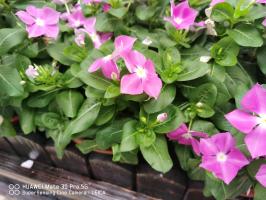What is Water Power Plant?
Water power, also known as hydro power, is a sustainable and renewable source of energy. It operates by utilizing flowing water to generate electricity. The mechanism responsible for harnessing water power is called a water power plant.
The Working Principle
The working principle of a water power plant is simple. The water is first moved to a dam or reservoir. When the gates are opened, the water flows through a pipe or channel to the turbine blade, where it produces kinetic energy by spinning the blades. The energy produced is then converted into electrical energy via a generator. The water that has passed through the turbine is discharged back into the river or stream. This cycle can be repeated indefinitely as long as water supply is present.
The Types of Water Power Plants
There are two main types of water power plants: conventional and pumped-storage. Conventional plants use a dam to store water into a reservoir, creating a difference in height between the surface and bottom water levels. This creates what is known as the head, where potential energy is stored. The water is then released into the penstock, where it moves to the turbine, generating energy. Pumped-storage plants work in a slightly different way, pumping water from a lower reservoir to an upper one when electricity demand is low. When demand increases, the water is released into the turbine, producing energy.
The Advantages of Water Power Plants
There are a number of advantages to using water power plants. Firstly, it is a renewable and sustainable energy source. Secondly, water power plants do not pollute the environment or produce waste. Thirdly, the operation and maintenance cost of water power plants is relatively low compared to other energy sources.
The Disadvantages of Water Power Plants
There are also several disadvantages to water power plants. One of the main disadvantages is the high initial cost of construction. Additionally, the construction of dams and reservoirs often result in the environmental disruption of natural habitats and the displacement of the local population. They also require ample water supply to function, which can be a challenge in areas that are prone to drought.
The Future of Water Power Plants
Despite the drawbacks, the future of water power plants is promising. Many governments and organizations are investing in the development of new and improved water power technologies. These technologies focus on minimizing the environmental impact of dams and reservoirs and increasing their efficiency. Moreover, water power plants will play an important role in the transition to renewable energy and reduce carbon emissions, as well as providing a reliable and sustainable source of electricity.
Conclusion
Water power plants operate by harnessing the kinetic energy of moving water to generate electricity. They have several advantages, including being renewable and sustainable energy sources, and a relatively low operational cost. However, the construction of dams and reservoirs and the displacement of local populations are also potential disadvantages. Despite this, water power plants have a bright future and will play a crucial role in the transition to renewable energy and a cleaner environment.

 how many times do yo...
how many times do yo... how many planted tre...
how many planted tre... how many pine trees ...
how many pine trees ... how many pecan trees...
how many pecan trees... how many plants comp...
how many plants comp... how many plants can ...
how many plants can ... how many plants and ...
how many plants and ... how many pepper plan...
how many pepper plan...






























